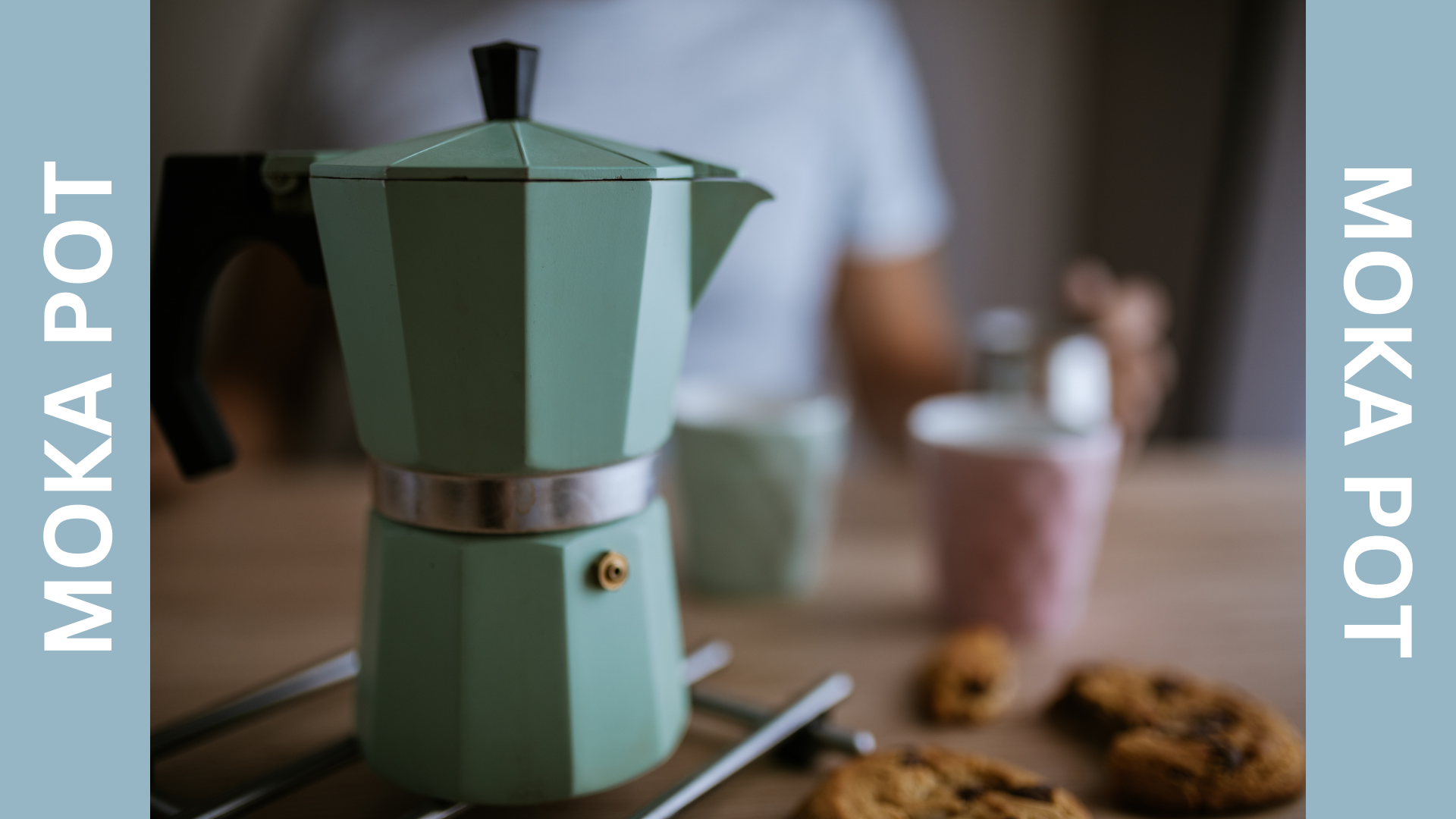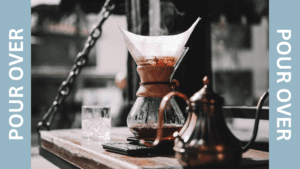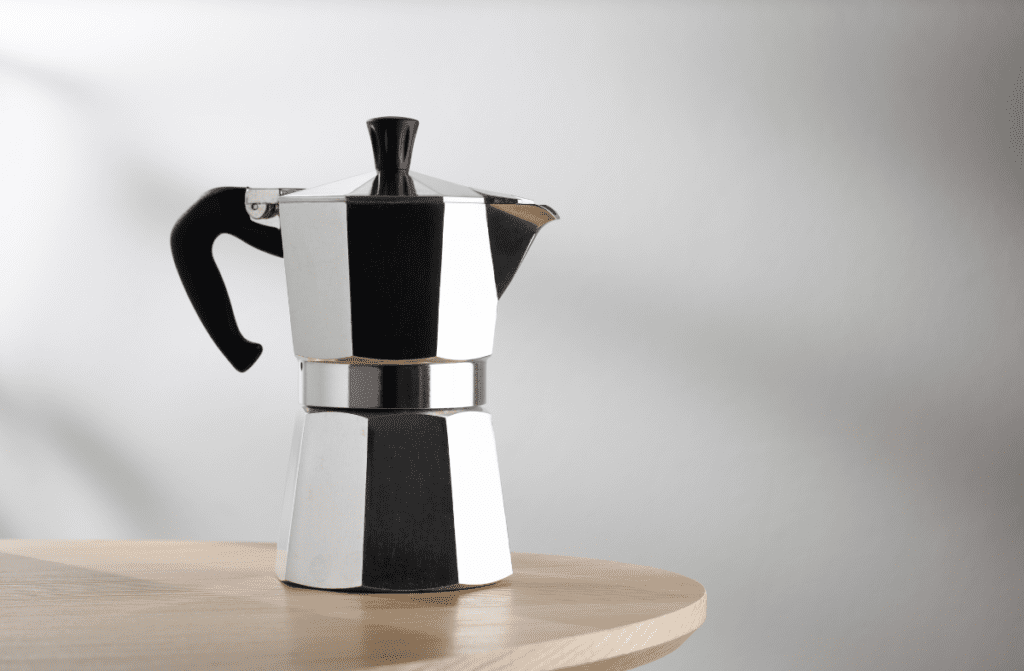
Coffee enthusiasts around the world cherish the Moka Pot not just as a brewing tool, but as an icon of rich tradition and exquisite taste. This unassuming, yet elegant device has stood the test of time, gracing kitchen shelves and café counters since its inception in the early 20th century.
Disclaimer: Some of the links within this post are affiliate links which means if you click on our recommended products and decide that product is right for you, I may earn a commission on that purchase at no cost to you. As an Amazon Associate, I earn from qualifying purchases. All content and opinions remain my own.
How To Master The Moka Pot: Your #1 Guide
Table of Contents
An Introduction To Moka Pots
Coffee enthusiasts around the world cherish the Moka Pot not just as a brewing tool, but as an icon of rich tradition and exquisite taste. This unassuming, yet elegant device has stood the test of time, gracing kitchen shelves and café counters since its inception in the early 20th century.
The Moka Pot, often referred to as a stovetop espresso maker, offers a unique bridge between the accessibility of at-home coffee making and the robust flavor profile akin to that of a professional espresso. Its distinctive design, characterized by its octagonal shape and two-chambered body, is more than just visually appealing; it’s a testament to the ingenuity of classic Italian engineering.
In this comprehensive guide, we will delve deep into the world of Moka Pot coffee brewing. From its fascinating history to the intricate details of brewing the perfect cup, this guide is designed for both novices and seasoned aficionados alike. We’ll explore various Moka Pots, provide a step-by-step brewing guide, and share expert tips to elevate your brewing experience. Whether you’re a curious beginner or a long-time Moka Pot user looking to refine your skills, this guide promises to enhance your appreciation and skill in crafting exceptional Moka Pot coffee.
The Rich History of the Moka Pot
The story of the Moka Pot begins in Italy, a country synonymous with coffee culture. Invented in 1933 by Luigi De Ponti for Alfonso Bialetti, the Moka Pot revolutionized home coffee brewing. Named after the city of Mocha in Yemen, which was a historical center of the coffee trade, this device brought the luxury of espresso-like coffee into households.
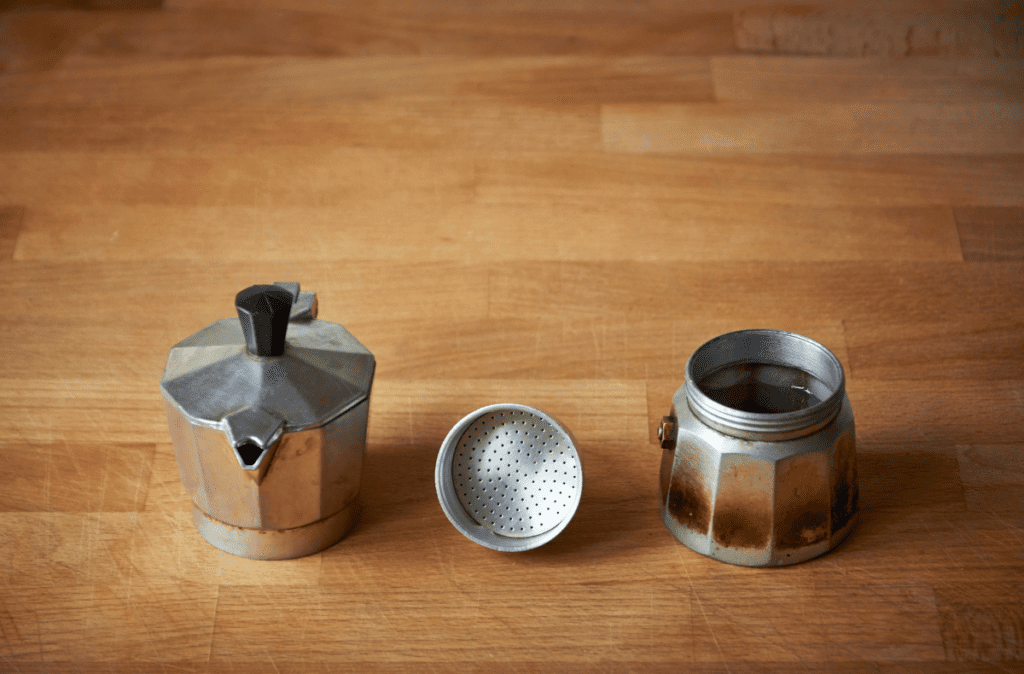
The initial design of the Moka Pot, called “Moka Express,” featured the now-iconic aluminum body and eight-sided design, allowing for better heat distribution. Its working principle, using steam pressure to pass boiling water through coffee grounds, was an innovation that made espresso-style coffee accessible without the need for expensive and bulky espresso machines.
The Moka Pot’s popularity surged in post-war Italy, where its affordability and simplicity matched perfectly with the domestic needs of the time. It wasn’t just a kitchen appliance; it became a symbol of Italian ingenuity and a staple of daily life. The Moka Pot also mirrored Italy’s industrial growth and design innovation, becoming a beloved object in households across the country.
As the years progressed, the Moka Pot spread globally. Each region adopted it in unique ways, integrating it into diverse coffee cultures. Today, it is celebrated not only as a tool for brewing coffee but also as an artifact of design, often displayed in museums and design expositions.
The Moka Pot has seen various adaptations over the years, including changes in materials and size to suit different preferences and needs. Despite these changes, the core design and functionality have remained largely unchanged, a testament to its enduring design and popularity.
The legacy of the Moka Pot extends beyond its physical design. It represents a bridge between traditional Italian coffee culture and the modern pursuit of quality home-brewed coffee. It’s a story of innovation, accessibility, and the democratization of a coffee experience once reserved for cafes and baristas, now available to everyone.
Types and Brands of Moka Pots

The Moka Pot has evolved over the years, giving rise to a variety of types and brands, each offering unique features and benefits. When choosing a Moka Pot, it’s important to consider factors like material, size, and brand reputation.
Materials and Design Variations
- Aluminum Moka Pots: The traditional choice, known for its excellent heat conductivity and classic design. Aluminum pots are lightweight, affordable, and heat up quickly, making them popular among daily users. However, they require careful maintenance to avoid corrosion and are not suitable for induction stovetops without an induction adaptor.
- Stainless Steel Moka Pots: These are more durable and resistant to rust and corrosion compared to aluminum. They work well on all types of stovetops, including induction. Stainless steel Moka Pots are often more expensive but offer longevity and a modern aesthetic.
- Electric Moka Pots: For those who prefer convenience, electric versions are available. They function similarly to the stovetop models but with the added ease of not needing a separate heat source, perfect for office settings or homes without a stove.
Popular Brands
- Bialetti: The original creator of the Moka Pot, Bialetti remains the most iconic brand. Known for quality and tradition, their Moka Express is a staple in many households.
- Alessi: Known for their stylish and modern designs, Alessi Moka Pots are often considered a piece of art. They combine functionality with aesthetic appeal.
- Cuisinox: Offers high-quality stainless steel Moka Pots. They are a great choice for those seeking durability and elegance.
- Grosche Milano: Well-designed in a range of aesthetic colors and designs. Here are a few examples, check out their full range for many more options
Choosing the Right Size
Moka Pots come in various sizes, typically measured by the number of espresso cups they produce, ranging from single-serve (1-cup) to larger family sizes (12-cups). It’s important to choose a size that fits your daily needs. Remember, a “cup” in Moka Pot terms refers to a small espresso shot, not a standard coffee cup.
Step-by-Step Brewing Guide
Brewing coffee with a Moka Pot is an art that combines simplicity with precision. Here’s a comprehensive guide to help you master this brewing method:
Equipment Needed
- Moka Pot
- Fresh coffee beans
- Coffee grinder
- Heat source (stove or electric heater)
- Water
- Scale (optional, for precision)
Step 1: Grind the Coffee
For Moka Pot brewing, the coffee should be ground slightly coarser than espresso but finer than what you’d use for a drip coffee maker. Aim for a texture similar to fine table salt. This grind size ensures optimal extraction without clogging the filter.
Step 2: Fill the Lower Chamber with Water
Fill the bottom chamber of your Moka Pot with water. You can fill the base with either freshly boiled or cold water. During our experiments, boiled water worked best and allowed for the best extraction before the water reached the ‘spitting’ point through the outlet pipe. For an accurate measure and safety, fill it up to just below the safety valve.
Temperature Tips: Water should be around 195-205°F (90-96°C) when it passes through the coffee grounds. We found that by starting with near-boiling water, this temperature created a more even flow of coffee through the extraction process. **If adding boiling water, be extra careful when screwing on the top as the base unit will become hot rather quickly. We recommend always using the right protective equipment when handling hot liquids and pots.
Step 3: Add Coffee to the Filter Basket
Fill the filter basket with your ground coffee. It should be full but not packed down. Level it off gently without tamping, as over-packing can prevent water from evenly passing through the coffee, leading to under-extraction.
Step 4: Assemble and Heat
Screw the top and bottom chambers together firmly to avoid leaks. Place the Moka Pot on your heat source. Use low to medium heat to avoid overheating the coffee, which can cause bitterness. You can always place the pot so only a portion of the base is in contact with the heating source.
Step 5: Brewing Process
As the water in the bottom chamber heats, pressure will force it up through the coffee in the filter basket, and the brewed coffee will start to emerge in the top chamber. You’ll hear a gurgling sound when the process is near completion.
Step 6: Remove from Heat
Once the top chamber is filled with coffee, and you hear a hissing sound, remove the Moka Pot from the heat. This prevents over-extraction and burning. Some suggest wrapping the bottom with a cold towel or placing it under cold water to stop the brewing process immediately.
Step 7: Serve and Enjoy
Pour the freshly brewed coffee into cups and enjoy. Moka Pot coffee is strong and rich, similar to espresso but with its unique characteristics.
Cleanup and Maintenance
After use, let the Moka Pot cool down before disassembling and cleaning. Wash with warm water and let it dry completely before reassembling. Avoid using soap as it can leave a residue and affect the taste of your coffee.
Refer to the manufacturer’s instructions on how to remove tricky components like the seals as you may damage them if not removed correctly.

Common Mistakes and How to Avoid Them
Brewing with a Moka Pot can seem straightforward, but certain nuances can significantly affect the quality of your coffee. Here are some common pitfalls and how to steer clear of them:
Overheating the Coffee
- Mistake: Brewing on too high heat can lead to over-extraction, resulting in a bitter taste.
- Solution: Always brew on low to medium heat. It might take a bit longer, but this ensures a smooth, even extraction, preserving the coffee’s flavors.
Incorrect Grind Size
- Mistake: Using a grind that’s either too fine or too coarse can impact extraction. Too fine, and it may clog the filter; too coarse, and the water will pass through too quickly, leading to weak coffee.
- Solution: Aim for a grind size like fine table salt. Consistency is key – consider investing in a good quality burr grinder for the best results.
Improper Filling and Tamping
- Mistake: Overfilling the filter basket or tamping the grounds can obstruct water flow, creating excessive pressure in the chamber.
- Solution: Fill the basket to the top without pressing down on the grounds. The coffee should be level but loose.
Neglecting Maintenance
- Mistake: Not cleaning the Moka Pot properly after each use can lead to a buildup of coffee oils and residues, affecting taste and functionality.
- Solution: Disassemble and rinse all parts with hot water after each use. Allow it to air dry completely before reassembling. Avoid using soap or abrasive materials, which can damage the metal or leave residues.
Using the Wrong Type of Coffee
- Mistake: Using the wrong roast or bean type can lead to less-than-ideal results. Some roasts may be too acidic or bitter when brewed in a Moka Pot.
- Solution: Experiment with different roasts to find what works best for you. Typically, medium to dark roasts work well in Moka Pots, offering a rich and balanced flavor.
Ignoring the Water Quality
- Mistake: Using tap water with high levels of minerals or impurities can affect the taste of the coffee.
- Solution: Use filtered or bottled water for a cleaner, purer taste. This will also help in maintaining the Moka Pot by reducing mineral buildup.
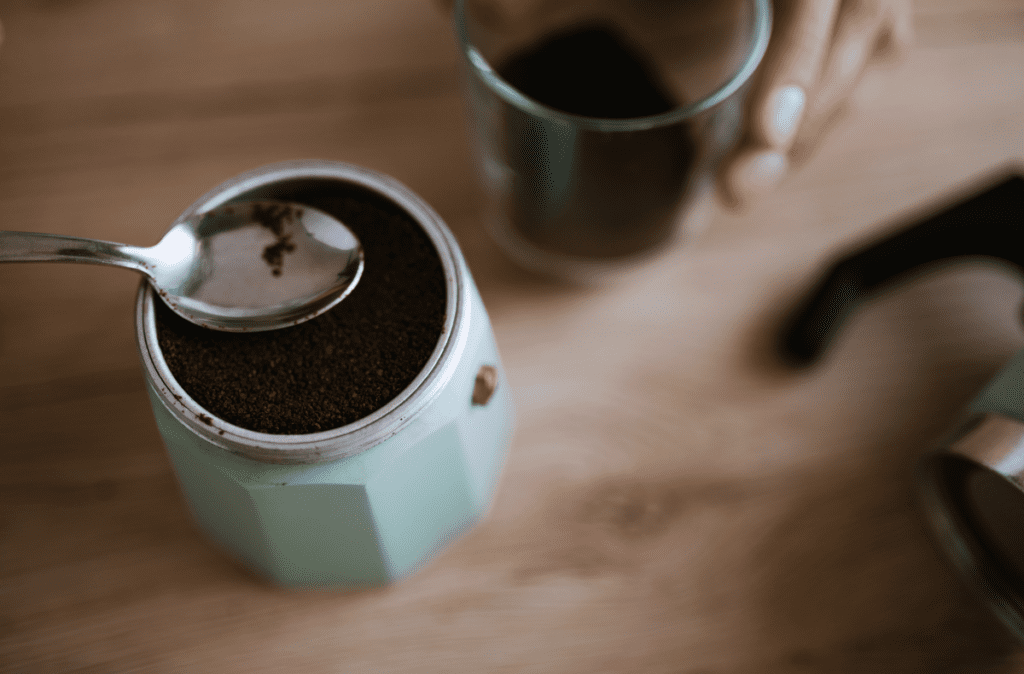
Let’s Sum It Up!
As we’ve journeyed through the world of Moka Pot brewing, it’s clear that this method is much more than a simple way to make coffee. It’s a tradition, an art form, and a testament to the timeless beauty of Italian design and ingenuity. The Moka Pot, with its unique method of brewing under pressure, offers a distinctive coffee experience that bridges the gap between the simplicity of manual brewing and the richness of espresso.
The versatility and accessibility of the Moka Pot make it an excellent choice for both coffee novices and connoisseurs. Whether you’re savoring a quiet morning at home or sharing an afternoon coffee with friends, the Moka Pot adapts to every setting, promising a consistently delightful cup.
In embracing the Moka Pot, you’re not just brewing coffee; you’re participating in a rich cultural heritage, experimenting with a craft that has been refined over decades. The ritual of assembling the pot, hearing the familiar gurgle, and pouring the rich brew is an experience that goes beyond the mere act of caffeine consumption. It’s about pausing to appreciate the finer details, the aromas, the flavors, and the warmth that only a carefully crafted cup of coffee can provide.
So, whether you’re a seasoned Moka Pot user or contemplating your first foray into this brewing method, remember that each cup is an opportunity to create something special. The Moka Pot is more than just a coffee maker; it’s a key to unlocking a world of rich, flavorful, and deeply satisfying coffee experiences.

For more coffee brewing tips check out our other blog posts here, or contact us if you would like us to delve deep into a particular type of brewing method you are interested in.

